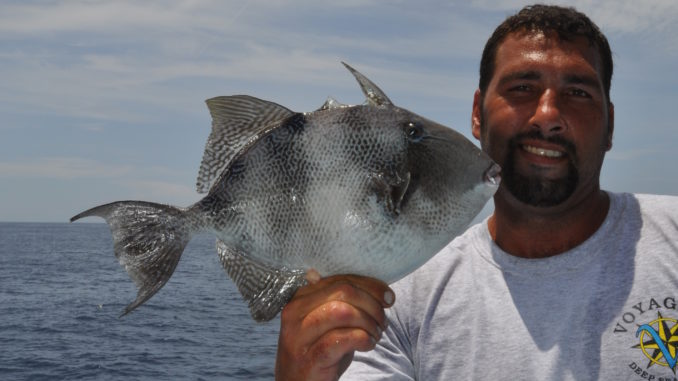
Find your best bottomfish in 90 to 110 feet of water off the North Carolina-South Carolina state line.
Little River Inlet enters the Atlantic Ocean just below the state line between North Myrtle Beach, S.C., and Sunset Beach, N.C. Anglers from both states use the inlet to gain access to fabulous fishing, the most notable of which may be summer bottomfish action.
Out in the open ocean, anglers who go “deep sea” fishing beyond the three miles where federal waters begin scarcely pay attention to the inlet, which acts as a landmark to identify the state’s border. Rather, they fish the wrecks and reefs, paying attention to where the fish are biting the best.
One of the best of these long-distance bottomfish anglers is Capt. Larry Horowitz, whose family owns the Voyager Fishing Fleet, which has charter boats docked in North Myrtle Beach and in Calabash, N.C. He regularly pilots the “Super Voyager III,” out of the inlet to bottomfish, especially during the summer when tourists and fishermen flock to the coast on vacation.
“If you want to catch some really nice bottomfish, the best action is way offshore, almost to the break,” he said. “Today, we’re heading out 50 or 60 miles.”
Horowitz, 54, is a fourth-generation party boat captain whose family has been in the business for more than 100 years. He moved in 1980 from Cape Cod, Mass., to Myrtle Beach, where he carries on the family tradition.
During the three-hour ride to a favorite fishing area, five mates readied the gear. The rods were short, heavy action, bottom-fishing rods paired with 3/0 and 4/0 Penn Squidder and Jigmaster reels spooled with 50-pound test monofilament. The bottom rigs are simple, consisting of two surgeons loops with circle hooks and 12-ounce bank sinkers. The bait most-often furnished is squid, but Horowitz will have cigar minnows and northern mackerel for people who prefer those baits.
Horowitz flipped through a notebook in which he had written down hundreds of GPS coordinates. He said there are so many places to fish after crossing 40 or 50 miles of ocean that no one could ever fish them all.
“Every time I move, I am looking for new places with fish,” he said. “I mark them down in case I’m in the same area on another day so I can give them a try. I might move several times during a day. Whenever the bite tapers off, I’m ready to go.”
While many boats advertise “deep sea” fishing, the term means different things to different folks. Horowitz fishes ledges, livebottoms and reefs all the way out to the Continental Shelf break. The waters he fishes are between 100 and 125 feet deep.
“A good place to begin is the Twin City Wrecks,” he said. “Beyond that, there is good structure all the way out to the Winyah Scarp.”
The Twin City Wrecks is the local name for the “Hebe,” a Dutch merchant vessel, and the British Navy’s armed trawler, “St. Cathan,” which were involved in a collision in 1942. They sank near one another in 90 to 110 feet of water.
Once his boat arrived at the fishing area, Horowitz watched his color depth finder for the presence of fish while two mates stood at the bow. At his signal, they dropped an anchor.
“I use a 150-pound anchor or a 180-pound anchor with 300 feet of line,” he said. “Sometimes, if the conditions dictate, I use both anchors set with the lines in a ‘V’ to keep the boat from swinging so much that the fishing lines miss the structure when the anglers drop them.”
After the anchor line became taut, Horowitz’s voice came over the loudspeaker. “Drop them in!”
As soon as their baits hit the bottom, anglers began reeling in sea bass, grunts and snappers. The mates scurried about, squeezing between the anglers and the cabin to help them untangle lines and unhook fish. They placed any fish that were keepers in baskets so every angler’s catch was separate from the rest.
Horowtiz’s voice urged the anglers on with party boat jargon, “Reel faster! My grandmother can reel faster than that! He’s the greatest fisherman on the Atlantic! Raise that rod high so you bang the sides of my boat!”
As the bite ebbed, the mates raised the anchor. Horowitz headed to another spot, watching his color depth finder and GPS screen.
After the boat was anchored again, the anglers were hooking fish. Many of the fish wore brilliant colors.
“It’s just like fishing in an aquarium,” he said. “You never know what is going to swing over that rail next.”
The most common fish the anglers catch are black sea bass.
“Some of them will weigh more than four pounds,” he said. “This far out, you won’t see anyone else. Since nobody is targeting these fish, they grow big. If someone was out here for a day of trolling along the break, all they would have to do is bring along some bottom-fishing tackle and they could also catch some of these great fish.”
Before the fishing was over, the anglers caught yellowtail snapper, vermilion snapper (aka beeliners), scamp, gag grouper, dolphin, cobia, greater amberjack, lesser amberjack, dogfish shark, African pompano, blue spotted coronetfish, Cuban hogfish, Toro (bigeye) spinycheek scorpionfish, red porgy, jolthead porgy, rock hind, mangrove snapper, gray triggerfish, white grunt, scup and black sea bass. Red snapper were also swung over the side, but the open season limited to three weekends in July, they were released.
For anglers who do not want to spend an entire day offshore, the 70-foot “Starship” offers a half-day bottom-fishing option. Capt. Billy Keziah, who sometimes pilots the “Super Voyager III,” is usually in the wheelhouse of the “Starship.”
“We mainly fish off of Sunset Beach,” he said, “but we also fish the Sherman (wreck), which is off of South Carolina, about 7 miles from Little River Inlet. We catch sea bass, porgies, porgies, flounder, pinfish, spadefish and gray trout. Our half-day trip costs a third as much as all-day trip and is a great adventure for people who want to fish for fun, especially if they bring their children along.”
Keziah targets small ledges, reefs and hardbottoms close to shore. Rather than anchoring, he allows the boat to drift above structure in 35 to 50 feet of water.
“We see lots of sportfishing boats, so the ledges get high fishing pressure,” he said. “I have to change fishing areas quite a bit. I might come back to the same spot two days or two weeks later. Before fishing it again, I check it over with my color depth finder to see if the fish are back. Greens and yellows mean fish are there, but I really want to see reds and oranges, which are harder signals that indicate more fish.
Even in the shallower waters, Keziah uses the same rods and reels as Horowitz, but it only takes 8- to 10-ounce sinkers to take baits to the bottom. He said anglers on the side of the boat with their lines going beneath the hull get the most bites. A long drift is one-third of a mile and most are shorter.
“I swap sides every time I move back upwind of a fishing spot,” he said. “That gives all the anglers the same chance over the course of the day.”
The mates also set drift lines from the back of the boat, lines that are not weighted and are baited with live bait or frozen cigar minnows.
“We catch cobia and king mackerel on the drift lines,” Keziah said.”The mate usually hands the rod to the nearest kid when a fish hits.”
Mates also untangle lines. Sometimes anglers on opposite sides of the boat tangle their lines and think they have hooked fish.
“I can see everything from up here,” he said. “I know when it’s a tangle and not a fish. The anglers usually figure it out, and the mates get the lines untangled and back into the water as quickly as possible. The longer your line stays in the water, the more fish you are going to catch.”
DESTINATION INFORMATION
HOW TO GET THERE — The area around LIttle River Inlet on both sides of the state line — North Myrtle Beach, S.C., and Calabash, N.C. — are easily accessible from US 17. Popular wrecks for summer bottom-fishing are the offshore Twin City Wrecks (33 08 470/78 20 420 and 33 08 270/78 20 770) and the nearshore General Sherman wreck (33 43 733/78 32 452). Bottomfish action can be good year-round; the party boat season begins in April and runs into the fall, with good catches through the summer.
TACKLE/BAITS — Heavy action boat rods of 5 to 6 feet, with Penn Squidder, Jigmaster or Senator reels spooled with 50-pound monofilament line. Squid strips are the most-popular bait, but cigar minnows also catch plenty of fish, especially on drift lines.
FISHING INFO/GUIDES — Voyager Fishing Fleet, Dock Holiday’s Marina, North Myrtle Beach, SC, 843-626-9500, www.supervoyagerdeepseafishing.com. See also Guides and Charters in Classifieds.
ACCOMMODATIONS — Best Western Ocean Sands Resort, North Myrtle Beach, 800-588-3570. Castaway Beach Inn, North Myrtle Beach, 843-272-5512; Sleep Inn at Harborview, Little River, 843-249-4848.
MAPS — Maps Unique, 910-458-9923; Capt. Segull’s Nautical Charts, 888-473-4855, www.captsegullcharts.com.

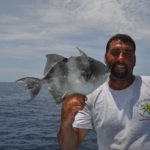
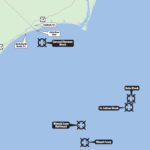
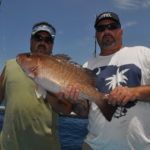
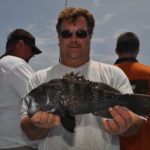
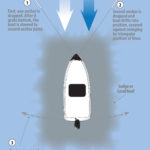




Be the first to comment